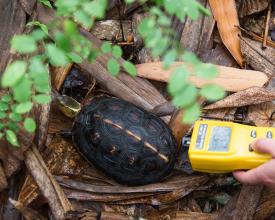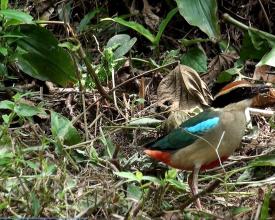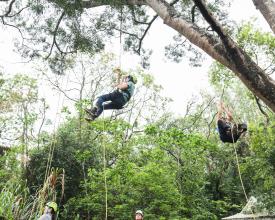
L'écotourisme des réservoirs favorise la conservation des habitats et la protection des arbres anciens

Le réservoir de Hushan, construit depuis 2001 au pied occidental des collines de Douliu, a eu un impact négatif sur le patrimoine génétique des forêts de basse altitude et sur les habitats d'espèces menacées telles que Pitta nympha et Cuora flavomarginata, ce qui a incité à prendre des mesures de conservation. De 2007 à 2015, l'Institut de recherche sur les espèces endémiques a mené des études écologiques dans le réservoir et les forêts environnantes. Une attention particulière a été accordée à la conservation et à la recherche sur le déplacement de l'espèce protégée de classe I, Cuora flavomarginata. L'association pour la conservation culturelle et écologique du réservoir de Hushan a été créée pendant la phase de construction et collabore avec les agences gouvernementales depuis 2009, en faisant participer les jeunes et les anciens à des initiatives de renforcement de la communauté. Ces activités comprennent des études à long terme sur les ressources écologiques, des patrouilles locales, des études de suivi sur les Cuora flavomarginata relâchés et la préservation des arbres anciens. Cette solution a permis de promouvoir le développement de l'industrie locale et d'améliorer l'écotourisme dans le réservoir.
Impacts
L'association de conservation culturelle et écologique du réservoir de Hushan, en collaboration avec les ressources gouvernementales, s'est engagée dans divers projets de conservation écologique, jouant le rôle de gardien de la culture locale et des écosystèmes. Depuis 2009, elle a recensé 18 espèces de mammifères, 24 espèces d'oiseaux, 16 espèces d'amphibiens et 9 espèces de poissons et de crustacés dans le réservoir de Hushan et ses environs. En 2022, ils se sont associés à l'Institut de recherche sur les espèces endémiques pour mener des études de suivi sur le Cuora flavomarginata relâché et ont formé plus de 30 résidents en tant que guides touristiques communautaires. Ils ont encouragé des activités telles que l'escalade des arbres, la transformation communautaire de produits locaux et les observations écologiques nocturnes, ce qui a permis d'augmenter le nombre de visiteurs de 1 500 par an. En outre, ils ont collaboré avec trois écoles voisines et éduqué près de 500 enfants sur des sujets environnementaux. Ces dernières années, ils ont formé neuf instructeurs locaux à l'escalade des arbres et préservé dix arbres anciens dans le cadre d'une formation à l'éducation à l'environnement. En mettant l'accent sur le développement de l'écotourisme communautaire, l'association vise à attirer les jeunes dans la région et à créer une vision de la coexistence entre l'homme et l'environnement.



